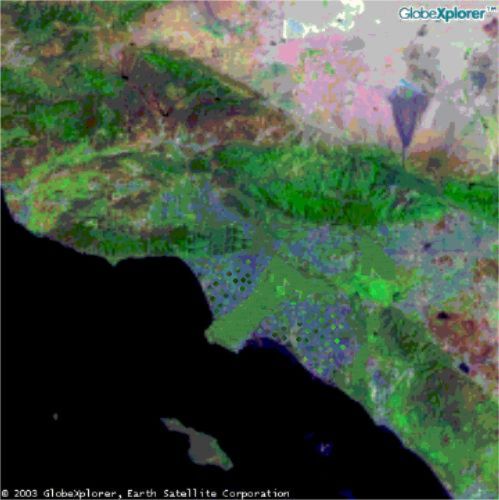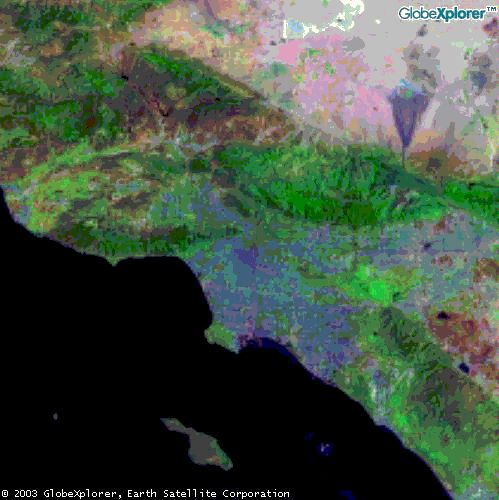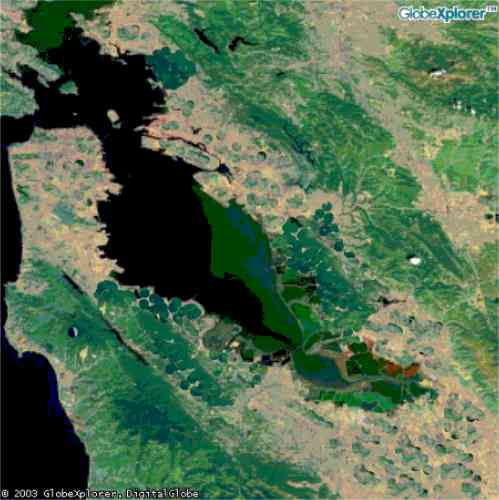What can we learn from Los
Angeles ?
First we need to ensure there is an equitable
mix of business proximate to residences.
And second a finite area designated open space
between defined suburban areas.
Each suburban area to be as self contained as possible and enough space
between each suburban area to make it highly likely that few will commute BETWEEN them (and prefer to
relocate rather than commute ) .
So a "suburban area" should be more of "town" than anything and the open space between
them needs to be considerable to succeed in controlling traffic
congestion.
There are lots of LA county examples of
"town" units. The problem is that
they are contiguous and traffic is horrendous because of commuting between
them.
The ideal development plan for southern CA would have been triangular
towns with open space beach between them. |
|
Wirh Green Belt and Green Infill
 |
Before

|
Offering the optimum ability
to live near the beach yet control traffic. There could have been
plenty of reasonably sized lots and open space within the town itself.
What would the San Barnardino County towns be like? Certainly less
polluted. http://www.socalcompass.org/survey/thanks_survey.html
Needless to say you'd need some pretty strong, State
government to enforce these restrictions .
So the suburbanism of choice would be an area of land big enough to be
mostly self-sufficient (no bigger than a 30 mile triangle) surrounded by a
necessary large area of open space (at least 20 miles).
There are 12
million more Bay Area residents predicted in the next 20 years should they be catered for by contiguous
development and Infill ? No and No !
One answer would be to encourage business to move to
Mendocino - Fort Bragg area, for
instance, with incentives. Limit it to a 30 mile triangle surrounded by
open space. Big planning needs to be done at the state level to do
this. |
Wirh Green Belt and Green Infill
 |
Before

San Mateo
Infill to:-"compel people to leave their cars at home and rely on
public transportation such as high-speed trains" |
High Density
Development, even around transit hubs, will never reduce the demand for
automobile travel enough .
An underlying assumption of the Rail and New
Urbanist promoters is that we've become over-dispersed. It may be
understandable to long for a village-square past, but it's born more of an
impulse than reason, and the cause of a great deal of misinformation and “futureless” development. |
|
"TranSect"
Development
At a Feb 2003 meeting, a map of San Quentin
was showing 6 degrees of density from "Urban Core" to open
space. There was a "rainbow" of 6 "TranSect" development zones from highest density
at the bay to lowest at the freeway. |
"Smart" Growth rests on several questionable assumptions. It purports to relieve
traffic jams and reduce air pollution by packing more people and cars into
tighter spaces . Common sense tells us that this will make
congestion and air pollution worse.
But they say that these problems will vanish as people switch from cars to mass
transit?
That is unlikely! Modern metropolitan areas are so
dispersed that most trips require a car. Building High Density will never
be desired by the majority nor reduce the demand for automobile travel enough to
make any significant reduction in traffic congestion.
Express buses and subways provide a realistic
alternative to cars only for trips to and around downtown areas. Smart-growth
proponents favor using ferries and light-rail
alternatives, but these systems aren't speedy or
convenient enough to make it worthwhile for Americans to abandon their
cars.
How many folks aspire to live with no
garden and neighbors thru the wall
playing their stereo, dog barking. Having to keep the blinds down
for privacy, and no privacy on your balcony either?
The most recent survey of
the Public Policy Institute of California, polled 2,010 residents
statewide and asked:-
"If you had your choice, would you most prefer
to live in a single-family detached home, an attached home such as a condo
or townhouse, an apartment, or another type of dwelling?"
Answer:- |
Rail becomes obsolete if business moves out of the city
Nobody wants to live next to a railway line
The chances of the train dropping you off within walking distance of your work are not high
enuf
The train does not run frequently enuf. Too
much waiting and delays
The great expense of rail detracts from
investing in a more flexible bus service in
suburbia.
Not enuf people take the train to make any
significant change to freeway congestion.
Our tax dollars must be cost-effectively spent
to make the biggest difference to traffic congestion
& air pollution
Find out what history has told us already |
|
86% single-family
detached home
8% attached home
4% apartment
2% Other right, in the past? |
Lets resist the pressures that created Los
Angeles.
The computer revolution is making it possible for large numbers of people to work and shop from home. This has the potential to reduce both the business and retailing market share of
major metropolitan areas. In short, the city is
becoming less necessary and certainly is still a source
of crime from which suburbanites escaped over the past decades. The
computer and the diversifying airline industry are providing businesses
with unprecedented freedom to locate where they wish.
|
San Quentin ( a rebuttal to a
New Urbanist’s speech )
San Francisco already has more Suburban Transit Boardings
than any other US City. (Yet boardings declined 7% (90-95) like most
other cities did). The city cannot accommodate additional rail-boat
commuters from Sonoma or Marin. Both rail and ferry
are considerably more expensive than freeway, per person mile.
The New Urbanist said “San Quentin Development
will "shorten trips" and have the same effect as adding more
highway”.
If you can make the majority of units affordable then this could be true.
But we can imagine how expensive the majority WILL BE. Even if 40%
affordable were possible the remaining 60% would be adding
more than 4,000 San Quentin people to the
traffic congestion that already exists. |
New Urbanism
will only create more congestion. People's natural choice to live in the
suburb’s securer, cleaner, larger, detached lots with less air and noise
pollution will prevail (market choice) .
Most Californians don't back 'smart growth' and
they include the only part of the population that is growing - minorities and
immigrants
Affordable housing, particularly in sunny California, can only be
desirable if detached (mobile or manufactured) on reasonably sized lots. (Contempo Estate in Marin is an example). Apartment dwellers never settle for apartment living.
Convincing people NOT to live in the suburbs and choose a
smaller house/lot is a futile goal. |

